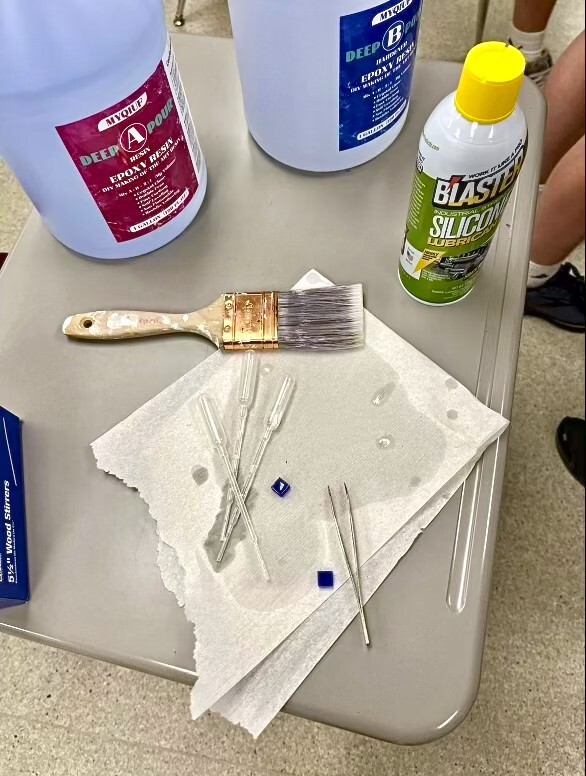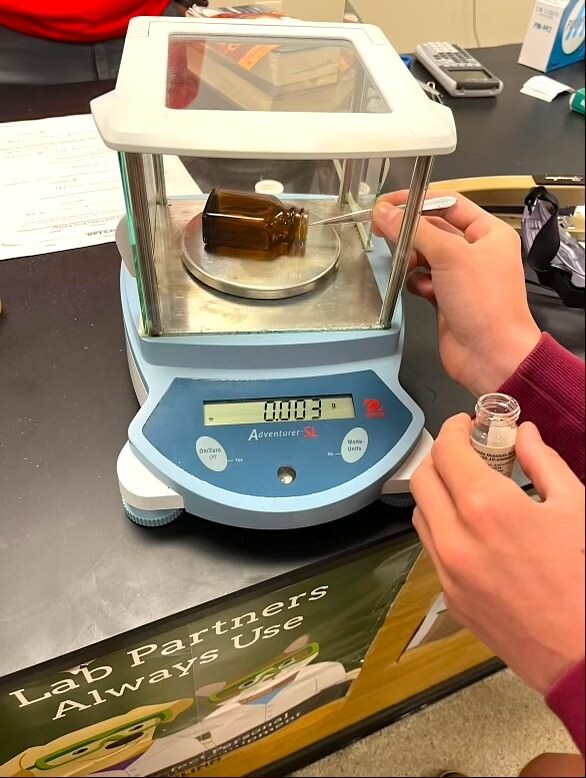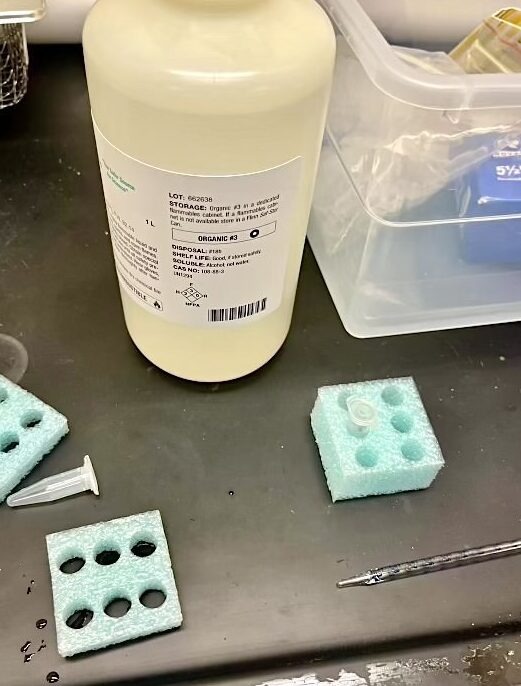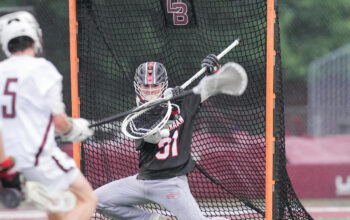Amy Meng, Editor-in-Chief
@amengcourant
While many experiments are conducted under the microscope or in test tubes and flasks, some students at the high school are launching their research into space. Through advanced technology provided by local grants and various NASA programs, the Astronomy Club’s ongoing project involves using quantum dots to mitigate UV radiation.
The club began looking into research projects two years ago. Initially, the team explored fungi that would produce melanin, but the material’s toxicity pushed them to explore an alternative: quantum dots. “We found a program called Cubes in Space that would let us send our experiment up into space and investigate the idea of how we can protect against UV radiation,” senior and Astronomy Club Co-President Annie Gilliam said.
Quantum dots are nanoparticles with unique light-absorbing properties, making them an ideal choice for the Astronomy Club’s next project. “The wavelengths that the quantum dot will absorb come out as green, blue or purple, depending on which type of dot it is,” junior and Co-President Michael Telesco said.

As a result of detailed regulations, the club was limited to using mainly organic materials without any battery power in their research. “We suspended the dots in the resin and used film photography paper to let us see if the visible light was printed onto the paper. This way, we saw how the quantum dot properties worked and transformed the light,” Annie said.
Club members have been looking into various programs accepting proposals that will allow them to continue their data collection in space. On top of NASA Cubes in Space, other NASA programs, such as TechRise and Kewton Space, are opportunities for members to obtain more funding and resources. “Kewton Space accepted us and we formulated a research experiment to test the properties of quantum dots and see if they could apply to possible objects in space,” Michael said.
Members look forward to utilizing these funded electronics to continue their investigations into UV levels. “We’re going to possibly mount an Arduino software with a UV sensor, and that will be giving readings throughout the time it’s in space. Ideally, what we want to see are the UV levels from the control group and the experimental group,” Michael said.

The control group will have no quantum dots, while the experimental group will. “Ideally, in the control group, we should see high levels of UV radiation being absorbed by the sensor, and in the group with the quantum dots we should see lower levels,” Michael said.
The materials the students didn’t have readily available were created using advanced 3D printing. “We also had to use 3D printing to create a black mold that was opaque and could block out excess light,” Annie said. “We used a control side and a non-control side with and without the dots.”
The club will use experience and knowledge gained from navigating past setbacks in the next steps of their research. “There was an issue last year because the soluform of the quantum dots didn’t dissolve in the toluene. We had to give it an ultrasonic bath to dissolve it, and it didn’t quite work. It was very rough, but we sent it up into space anyway,” Michael said. “This year, we’re planning on doing it right. We’re going to get pre-dissolved quantum dots, probably in like a liquid of toluene, and possibly also just cement them in an epoxy resin.”

Chemistry teacher and advisor Jeffrey Brentson, who oversees the research process, only stepped in to help when necessary. “I stay out of their way as much as possible,” he said. “If I feel like the students are stuck, I’ll try to redirect them and try to guide them to make sure we’re not wasting a lot of time.”
For junior and key project member Tyler Bleil, the research process has led to connection-building opportunities. “It definitely strengthened some of the existing friendships and brought us closer together with the very late-night editing of proposals, “ he said.
Tyler also noted some of the highlights of the quantum dot research process. “The project has photovoltaic advantages as well, taking radiation and making visible light for solar cells,” he said. “We didn’t get our data from a FedEx order last year, so it’s more about camaraderie and getting to use some exotic materials and test our abilities.”
The research project is a result of a collective effort between several of the astronomy club members. Each student produced specific parts of the project, and some branched off into focusing on certain topics in science classes and during free time. “We hold some other events with the club, like stargazing events and activities in the dome, but this was a small group of five to eight people that were willing to commit their time,” Annie said.
Mr. Brentson also emphasized the role that collaboration plays in scientific research. “The thing I think is probably the most valuable that [the students]are getting is how to work with one another and recognize that that’s the best way to do any kind of research in science. You might make some cool discoveries, but when you do it with a group of people, the discoveries are going to be much faster and probably bigger and better than trying to do it alone,” he said.
This school year, the Astronomy Club looks to continue its current research projects and pursue new opportunities. “We’re waiting on some funding from a variety of different sources to acquire the materials we’re going to need,” Mr. Brentson said. “Now, it’s just a matter of getting the right quantum dots, getting the right materials, equipment and electronics, and doing the programming to collect the data we’re sending up at the higher level.”




